How to Audit Your Current Content Marketing ROI

Companies want to see results, and that means tracking expenses, profits, and the return on various investments.
That's fine, but it's easier said than done sometimes.
For example, how much ROI does your social media posting have?
To find out, you need to have some idea of how much you spend running your social media account, not counting paying for ads. You also have to be able to attribute sales down the line to people who were influenced by your social media posts. Considering there can be several layers of abstraction between seeing a post and buying a product, and those sales can take place weeks or months later on entirely different platforms, it can be very hard to set up that attribution model.
The same goes for content marketing.
It's relatively easy to track your expenses in content marketing, but figuring out how much benefit you get from it (the return in ROI) is a lot harder. It can be done, though, so let's talk about how to set it up.
Calculating Expenditures
The first, and often one of the easiest, tasks to complete when calculating your content marketing ROI is calculating your expenses.
That's because it's easy to see when money goes out.
The tricky part is determining where the borders of content marketing end and where expenses are attributable to other channels.
For example, it costs money to pay for the hosting for your website, pay for your domain name, pay for SSL certificates to secure it, pay for plugins and themes, custom code, and all of that underlying technical stuff that goes with running a website.
Do you count that expense as part of your content marketing? Some people do, and some people don't. I wouldn't, myself, because it's not an expense you can really do away with, and it can fall under multiple banners. If you host your own storefront, it's the same pool of money to run the website for it.
Another example is employee salaries. Obviously, the salary of a full-time content writer would count towards content marketing expenses, right? Well, maybe. If they also do internal knowledge base writing, product page description writing, PPC ad copy writing, technical documentation, and other forms of writing, maybe it's not so clearly cut and dry.

What should you count, or at least consider counting, as part of your overall expenses for content marketing?
- Salaries for writers, content strategists, editors, and other marketing team members.
- Costs for writing itself if hiring freelancers.
- Costs for associated content marketing assets, like graphic design.
- Costs for marketing-specific tools like LLM access, design tools, keyword research tools, and the like.
- Costs associated with guest posting, outreach, and promoting content.
- Costs for any agencies you hire to do some or all of the work (often mutually exclusive with most of the above).
Some people will also draw the borders a little broader. If you pay for PPC ads that promote content rather than a landing page, do you consider that part of content marketing? If you pay for a tool that serves multiple purposes, do you pro-rate part of it towards content marketing? It's up to you. The key is to be consistent each time you calculate ROI.
Tracking Audiences Through the Funnel
The biggest challenge of tracking the ROI of content marketing is the fact that content marketing is not sales. Content marketing is meant to build reputation, broaden awareness, and build trust and authority.
Some metrics can be tracked directly on your site. You can measure the number of people coming into your website to land on specific pages. You can track second-tier metrics like backlinks generated to your content, with or without outreach.
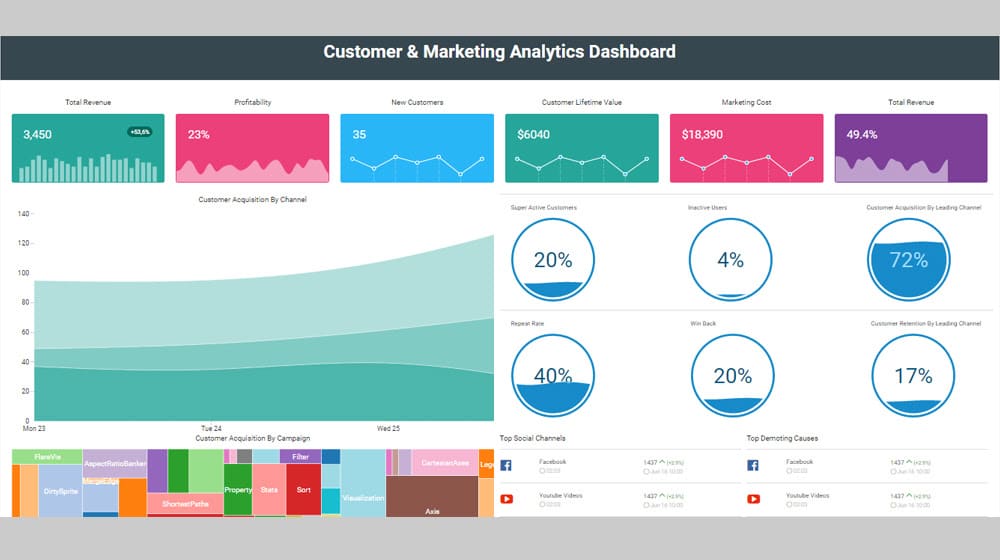
Others require secondary tracking mechanisms. If you want to track people who call to set up appointments because they found you through your content, you would need to use special phone numbers and call tracking. If you want to track the people who click from your content to a product page and then make a purchase, you might want to use special UTM parameters for different posts to attribute granularly.
The other thing you need to do is identify what your key performance indicators are.
Identifying Key Performance Indicators
Key performance indicators are the tangible metrics you can track, optimize for, and assign a value to.
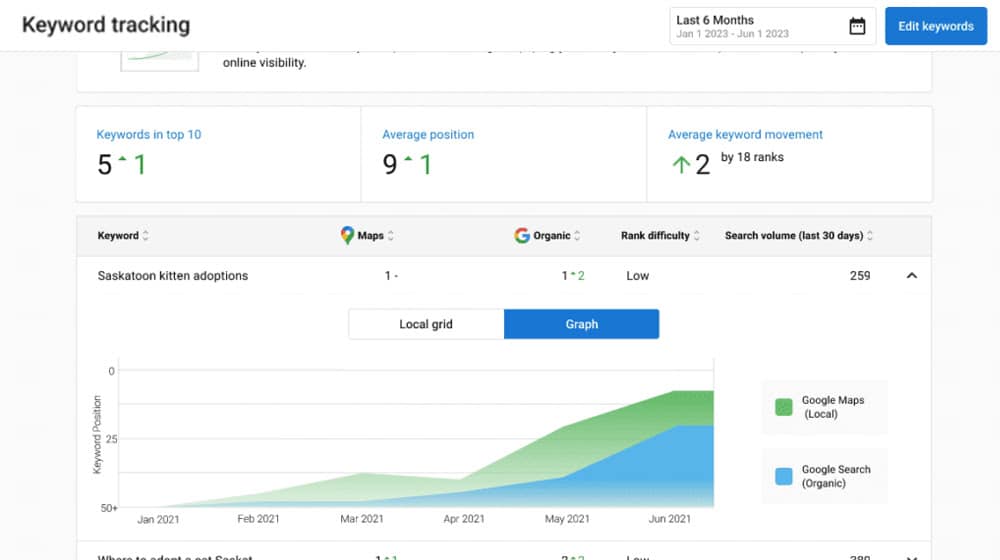
There are a lot of them you can choose to track:
- Website traffic overall, primarily from organic sources.
- User average time spent on site.
- User bounce rates, per-content and site-wide.
- Number of keywords you're ranking for.
- Overall average search ranking for your keywords.
- Search click-through rates.
- On-site to landing page or product page click rates.
- Conversion rates.
- Email newsletter subscriber growth.
- Social metric engagement numbers.
- Customer feedback or contact rates.
And, of course, the ultimate key performance indicator is the sales you make. What are the average cart values if you have multiple kinds of products? What are the raw sales numbers, both in volume and in monetary amounts?
You certainly don't need to track every single metric. And if you do, make sure to track them properly. Setting up the right kind of tracking for users in your funnels is critical so you aren't double-counting people or otherwise mis-measuring your metrics.
Attributing Value to Actions
Then comes the hard part: assigning a value to these KPIs.
This is difficult because you can't just take your overall profits, divide them by your number of the metric, and have a value. One user's journey strikes through half a dozen or more metrics. Some of them get lost along the way.

If a user clicks from a Google search to a blog post, and from that blog post to another blog post, and then to a sales page and makes a purchase, which blog post gets the win? The one that brought them in, or the one that led them to the sales page? Or both?
There's no right answer to questions like these. That's why it's important to have a bunch of different ways of looking at your marketing, through different perspectives and with different values, so you can estimate your return on investment in different ways.
Developing Goals and Benchmarks
Another critical element of tracking content marketing ROI is coming up with your overall goals.
Remember, the return on an investment doesn't have to be purely monetary. Actions that build your reputation as a trustworthy source might not have a direct relationship to the overall cart value in a way you can track, but they are undeniably beneficial. Content marketing that brings people in and allows you to reach them with remarketing ads later is still partially responsible for the sales you'd attribute to those ads.
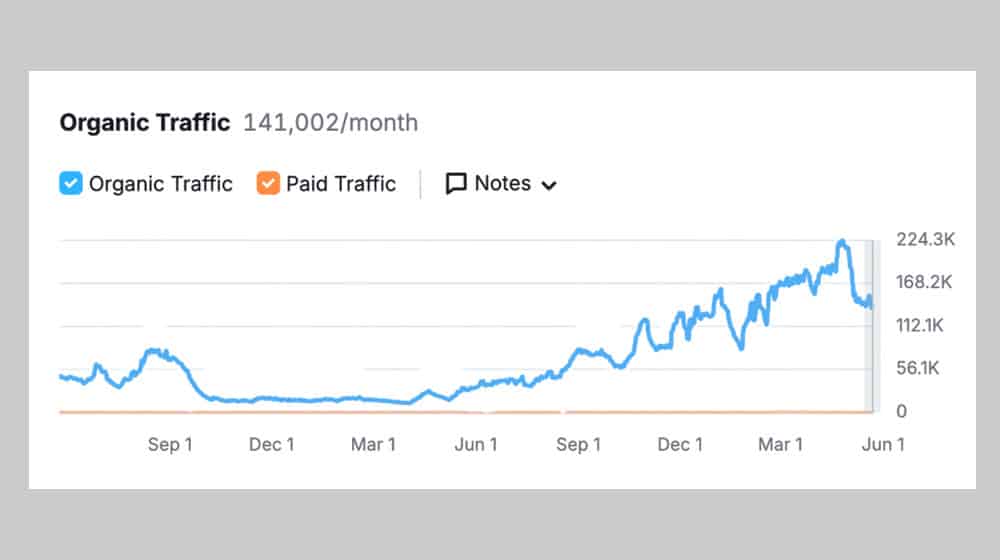
So, consider what goals are important to your business.
- The increase in traffic as new content is published.
- The increase in number of pages ranking in the top ten or top five of Google for their keywords.
- The increase in conversion rates across content.
- The increase in number of leads reaching out to your sales team.
- The increase in revenue, because yes, the money still matters.
As always, remember that your goals should be SMART: specific, measurable, achievable, relevant, and time-bound. If that means you need to implement a tool to measure it, so be it.
Calculating ROI for Content Marketing
ROI takes two forms: dollar for dollar and dollar for metric.
Dollar for dollar is the easiest to calculate, of course. How much did you spend, and how much did it make you in that same period? The less you spend for the more you make, the better off you are.
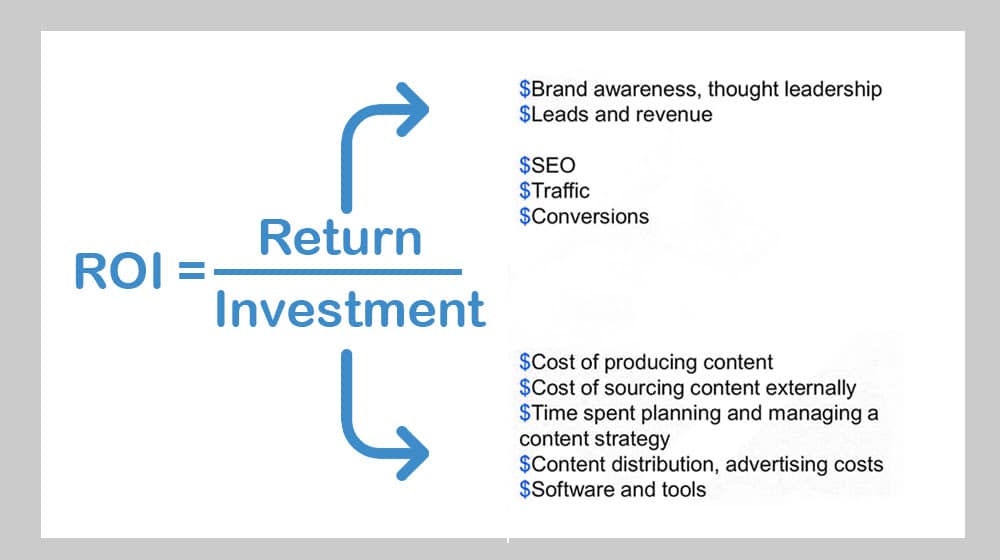
Dollar for metric is harder. This is why some people will assign their best-guess dollar value for metrics. Take your overall profits, divide them by the number of people visiting your site, and you have a rough value per visitor. Compare that to the value per customer to calculate a profit ratio, and track that as you publish content; well-targeted content or improvements to your conversion rates can make the metric go up.
Raw dollar for metric is less tangible, but no less valuable. Unfortunately, it's where many businesses fall flat. The disconnect between paying for something and not getting money back from it is a hard sell – literally – to the MBAs who make the decisions. That's what reporting is for: to convince your decision-makers not to cut funding for content marketing just because it doesn't have directly attributable sales attached to it.
Adjusting, Testing, and Optimizing
Once you have your various ROI metrics down and being tracked, it's time to get to work improving that ROI across as many of them as you can.
There are, of course, a billion different ways to do this. Improving your site speed, changing the colors of buttons, changing your writing style, using different graphic design, targeting a different search intent; the list can go on indefinitely.
The best strategy is to know what you're testing and what you're focusing on. If you decide to do a big content push and publish a bunch of content at once, it won't be surprising to see your number of ranking keywords go up, your traffic numbers go up. But maybe your conversion rate go down. That goes doubly so if you're targeting more informational intent keywords rather than transactional intent keywords.

Key things to look at include:
- Finding ways to optimize content in a vacuum. Each piece of content represents a gateway for people to find you via Google search and other channels, so how well does that piece of content funnel people deeper into your sales ecosystem? Can you make changes to the content on a granular level, like changing the title and meta description, or changing a focus keyword, to get better results? Then, can those changes be propagated throughout other content to replicate that improvement?
- How slowly or quickly does content fall off over time? If you're focusing more on evergreen content and building up content clusters with a pillar method, content might not start to pop off for weeks or months after it's published, as it gets indexed and sorted and catches on with link building. Conversely, if your strategy relies heavily on newsworthy and trending content, the initial weeks might be the best they'll ever perform. Which is better for your business, and can you use both, or shift to a more profitable model?
- Are there specific metrics you're harvesting that aren't turning out to be very useful, or that reveal things about your marketing that you wouldn't have noticed otherwise? For example, you might notice that certain types of content bring in a lot more traffic from a certain demographic you don't normally see. Currently, they're undervalued because the rest of your marketing doesn't reach them, but you might be able to open up a new audience if you shift your focus.
Figuring out all of this is, really, the job of an analyst. Having a pile of metrics can be handy, but if you don't know what to make of them, it doesn't do you a lot of tangible good.
What is a Good Content Marketing ROI?
There's not one real answer to this question.
Half a dozen different posts I read through while writing this all said the same thing: somewhere between 2x and 5x. In other words, if you spend $5,000 a month on content marketing, you should ideally have between $10,000 and $25,000 in revenue because of it.

These numbers are more or less made up, and vary wildly even between businesses in the same niche. You have to factor in the cost of your products, the costs and profits of other marketing channels, your own profit margins, and more.
As long as you're not spending more than you're making – or that if you are, you're still building intangible value like professional connections and thought leadership – you're doing fine. The goal of tracking ROI is so you can improve it, after all.





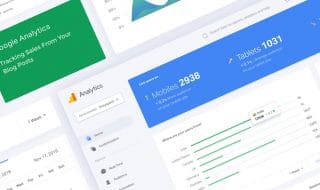




Comments